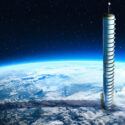This is the Mariana Trench, the deepest place on Earth. It stretches 11km (7 mi) down below sea level. But what if we made it even deeper? Get a giant drill because we’re about to dig a hole in one of the most hostile environments on the planet. Has anyone attempted to do this before? What kind of nasty conditions would you be stepping into? And could you drill all the way to the Earth’s core?
Here in the western Pacific, the Mariana Trench isn’t the most popular travel spot. It’s frigid and bone-crushingly deep, not something you pick for your vacation. So that’s not surprising that only a handful of people have ever visited it.
It’s a long way to the Challenger Deep, the deepest part of the Mariana Trench. Drilling through it would be both expensive and dangerous. You’d need to troubleshoot on the spot, work in complete darkness and survive cold temperatures. You might not come back safe and sound. Now that we’ve sparked your interest, it’s time to buckle down and get to work.
It would be costly to get to the bottom. But it would be even more expensive to start drilling through it. You’d need very specialized equipment. While the water temperature around you would be just above freezing, you’d need to worry more about the crushing pressure. At the bottom of the Mariana Trench, it would be 1,100 times the atmospheric pressure at sea level.
You wouldn’t be able to survive in just a diving suit. You’d need to jump into a submarine designed to withstand such high pressure. And all the drilling equipment would need to be specifically designed for the depth.
Before you could start drilling, you’d have another issue. There would be no way to anchor your expensive drilling equipment at the bottom of the Mariana trench. You’d need to find a way to stabilize your rig.
If that’s not bad enough, you’d need to assemble everything on site. You’d be moving heavy pipes and drills around. And you’d need to bring some powerful lights because it would be dark. The Mariana Trench is just too deep for sunlight to reach.
Once you dealt with all of that, you could start drilling. And that endeavor would bring even more surprises. We know more about the surface of the Moon than we know about Earth’s ocean floor. But one thing we do know is that it can get hot.
In 2011, researchers drilled the Japan Trench just outside of Japan. They went down 6.9 km (4.3 mi) and found the temperature below the seafloor was scorching. At just over 1 km (0.6 mi) down, the temperature reached 120 °C (248 °F).
Another challenge you’d face would be the ocean crust itself. It’s composed of igneous rock, or hardened magma. This would wear down your drill pretty quickly. You’d need to keep replacing your drill piece. And you’d better mark the hole with a re-entry cone. At the bottom of the ocean it would be tough to find the spot you’d already been drilling.
It would be like lowering a long strand of spaghetti into a 0.6cm (0.2 in) funnel at the deep end of an Olympic swimming pool. And oh boy does that sound hard. So, just how deep into the Earth’s crust would you be able to drill? That depends. How patient are you? And how much money do you have to spend on all that drilling equipment?
If you’re thinking of drilling all the way to the Earth’s core, forget it. Oddly enough, drilling through the crust from the deepest place on Earth wouldn’t help you get to the core faster. That’s because Earth isn’t perfectly spherical. It bulges at the equator, making the distance longer to the center of the Earth from the Mariana Trench longer.
If you wanted to drill all the way through the Earth, you’d be better off starting your project near the poles as they are closer to the Earth’s core.
Sources
- “Mariana Trench: The Deepest Depths”. Becky Oskin. 2017. livescience.com.
- “What Is The Total Length Of A Blue Whale? – WHALE FACTS”. 2012. whalefacts.org.
- “About The Mariana Trench – DEEPSEA CHALLENGE Expedition”. 2012. deepseachallenge.com.
- “Nereus Soars To The Ocean’s Deepest Trench”. Amy Nevala. Lonny Lippsett. 2009. whoi.edu.
- “The World’s Highest-Pressure Large-Bore Drilling Riser – Claxton Engineering”. 2021. claxtonengineering.com.



























